While the 1950s might have seen the publication of crucial series like The Lord of the Rings and Narnia, it was during the 60s that the fantasy genre skyrocketed to new levels of popularity and mainstream appeal. Publishers eager to meet rising demand sought out fantasy works, and the decade brought many beloved classics to the genre.
Below I’ve listed what I believe to be the 12 most popular or influential fantasy novels published between 1960 and 1970. I’ve tried to use the original cover from that year where possible. Series titles are included in brackets:
(To enlarge a cover simply click on it and the image gallery will open)
- The Weirdstone of Brisingamen (The Tales of Alderley), Alan Garner, 1960
- The Phantom Tollbooth, Norton Juster, 1961
- Something Wicked This Way Comes, Ray Bradbury, 1962
- A Wrinkle in Time (Time Quintet), Madeleine L’Engle, 1962
- Witch World (Witch World / The Estcarp Cycle), Andre Norton, 1963
- Glory Road, Robert Heinlein, 1963
- The Book of Three (Chronicles of Prydain), Lloyd Alexander, 1964
- Charlie and the Chocolate Factory, Roald Dahl, 1964
- Over Sea, Under Stone (The Dark is Rising), Susan Cooper, 1965
- The Last Unicorn, Peter S. Beagle, 1968
- A Wizard of Earthsea (Earthsea Cycle), Ursula K. Le Guin, 1968
- Dragonflight (Dragonriders of Pern), Anne McCaffrey, 1968
The Lord of the Rings didn’t take off in the USA until the late 1960s, when it sold millions of copies. This sent American publishers on the hunt for similar works. Some reissued older fantasy novels, bringing them to a new and larger readership (e.g. the Ballantine series, launched in 1969). Previously, adult fantasy had thrived mostly in pulp magazines, now became profitable and popular in novel format.
One of the most enduring fantasies of the 60s is Ursula Le Guin’s A Wizard of Earthsea, often cited as the first to introduce the ‘boy wizard’ trope. It explored complex themes and philosophical ideas, as did other young adult and children’s fantasy works of the time, such as Madeleine l’Engle’s A Wrinkle in Time (inspired by quantum physics), Peter S. Beagle’s The Last Unicorn and Susan Cooper’s Over Sea, Under Stone. In fact, young adult fiction in general began to thrive in this decade as the first books marketed expressly at teens were published.
Many of the influential works of this decade were by female authors and featured female protagonists. Several also blurred the lines between science fiction and fantasy. For example, McCaffrey’s Dragonflight and L’Engle’s A Wrinkle in Time are considered science fiction by some and fantasy or science fantasy by others.
The era also brought an important work of dark fantasy in Something Wicked This Way Comes by Ray Bradbury, which helped popularise the dark carnival trope.
A Few Interesting Facts
- Taoist philosophical ideas of balance are prominent in the Earthsea Cycle. Le Guin actually wrote an English translation of the Tao Te Ching (a Taoist text).
- The protagonist of A Wizard of Earthsea has red-brown skin, and Le Guin often expressed her annoyance at the character being portrayed as white on cover illustrations. She was also critical of the whitewashing (and a myriad of other problems) in the Sci Fi channel adaptation.
- American author Lloyd Alexander was inspired by Welsh mythology and his experience in Wales during his WWII army training.
- Anne McCaffrey was the first woman to win a Hugo Award for fiction and the first woman to win a Nebula Award.
- Mercedes Lackey read and loved Andre Norton’s books as a teen in the 60s. 30 years later, the two authors collaborated and wrote The Halfblood Chronicles (1991) together. Lackey also collaborated with Anne McCaffrey.
- A Wrinkle in Time came close to never being published. L’Engle received 26 rejections and almost gave up writing. Once she finally found a publisher the book was a great success and went on to win the Newbery Medal.
- Norton Juster loved the “music of words” and read widely as a child. The Phantom Tollbooth is known for its wordplay, wit and puns. It also references children’s fantasy classics, such as Alice in Wonderland, The Wizard of Oz, Charlotte’s Web and The Wind and the Willows.
- The Last Unicorn, which recently celebrated its 50th anniversary, is often voted amongst the top fantasy novels of all time. Beagle also wrote the script for the 1982 Japanese-American animated adaption.
- Robin Hobb lists Heinlein’s Glory Road as one of her influences.
- Roald Dahl’s Charlie and the Chocolate Factory was inspired by the chocolate companies of his childhood. In the 1920s Cadbury sent free test packages for new products to school children, and Cadbury and Rowntree’s were highly competitive and secretive about their chocolate-making methods.
Other 60s Works and Authors
There are some works that didn’t make it into the list above for various reasons, either because they were light on fantasy elements, because I’d already included another work by that author, because they were more science fiction or horror, or simply because I didn’t think they were as significant to the genre as others. However, some of these are still worth mentioning:
- The Cricket in Times Square (Chester Cricket and His Friends Series) by George Selden, illustrated by Garth Williams (1960)
- A Fine and Private Place by Peter S. Beagle (1960)
- Three Hearts and Three Lions by Poul Anderson (1961)
- James and the Giant Peach by Roald Dahl (1961)
- The Wolves of Willoughby Chase (The Wolves Chronicles) by Joan Aiken (1962)
- The Planet Savers (Darkover Series) by Marion Zimmer Bradley (1962)
- Elidor and The Owl Service by Alan Garner (1965 & 1967)
- The Jewel in the Skull (The History of Runestaff series) by Michael Moorcock (1967)
- Rosemary’s Baby by Ira Levin (1967) [horror]
- Swords Against Wizardry [Fafhrd and the Gray Mouser Series continuing from previous decades] by Fritz Leiber (1968)
- The Goblin Tower (The Reluctant King Trilogy / The Novarian Series) by L. Sprague de Camp (1968)
- The Warlock in Spite of Himself (Warlock Series) by Christopher Stasheff (1969) [science fantasy]
___________________
Are any of these books a favourite? Or would you add another important novel to the list? Feel free to give it a mention in the comments.



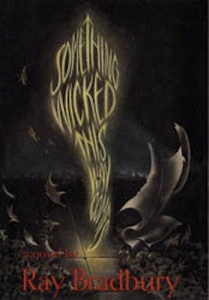
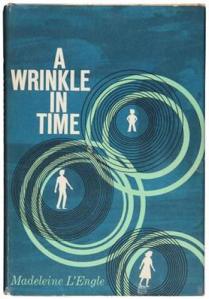

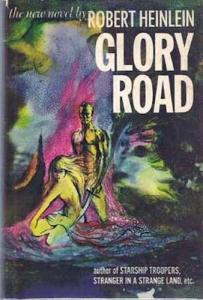
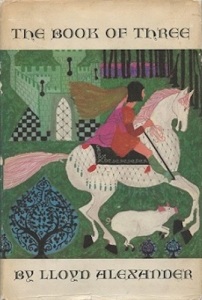

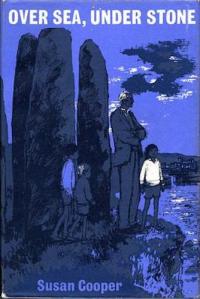
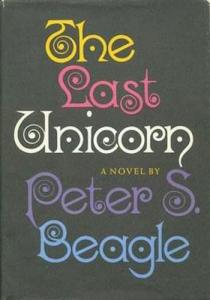
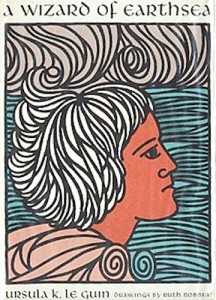
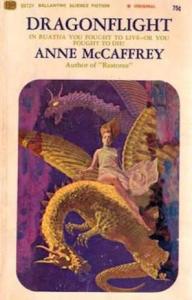
Very interesting. I need to explore some of these gems. Thank you.
LikeLiked by 1 person
This post inspired me to read, to approach a new book, and to write. I shared this on my site, but I’ll informally share it here. THanks again.
Read
The dragon
banished
to the old book
on the shelf
near the porcelain bell,
the red candles,
as tall as palace guards,
has singed the pages
to which it’s chained,
tainting the air
with smoke’s black spirits,
the heat rising from its heart.
There’s little else to do but,
with a cup of tea,
a sweet cake, and a soft chair,
part the volume’s covers
set the noble beast free.
LikeLiked by 3 people
I’m glad it was inspiring! Your poem certainly brings to mind that magical feeling of sitting down with a good fantasy book.
LikeLiked by 1 person
Thank you!!!
LikeLike
Sorry for typos.
LikeLike
Really interesting, thank you! I love the Chronicles of Prydain.
I’m sure you’ve included all the most popular works, great list.
LikeLiked by 1 person
Thanks! I haven’t read the Chronicles of Prydain yet but am keen to (I’ve read and heard a lot about it).
LikeLiked by 1 person
They’re like funnier, more child-friendly LOTR 🙂
Also they’re quite short so are quick to read.
I first heard of them through watching Disney’s The Black Cauldron!
LikeLiked by 1 person
Good to know – I do like quick reads, esp. after I’ve been reading lots of giant epic fantasy tomes. Interesting you heard about them because of the Disney adaptation! I nearly mentioned that one under ‘interesting facts’ but the list was getting too long 🙂 I’ve seen it but a long time ago – hadn’t realised it was based on Alexander’s books until I researched for this post!
LikeLiked by 1 person
The Black Cauldron is generally considered a flop and also very far from the books – I still like it though!
LikeLiked by 1 person
Well, that brought some happy memories. I started reading fantasy in 1972/3, and after LOTR/The Hobbit, I was desperate for more, so read many of the above (about 3/4).My favourites from this list are all of Alan Garner’s books, all of Susan Cooper’s, Le Guin’s Earthsea trilogy, and Lloyd Alexander’s series. I have been fortunate to meet both Alan and Susan in recent years.
LikeLiked by 2 people
Wow, great you’ve read so many – it sounds like you were one of those enthusiastic new fantasy readers the 70s publishers were eager to find more books for! That must have been quite something to meet Alan and Susan, especially if they were long time favourites. I haven’t read Alan’s books yet but I plan to.
LikeLike
I’ve been meaning to read some Ursula K. Le Guin – hopefully this year. 🙂
LikeLiked by 1 person
I hope you get a chance, she’s an amazing writer! I think my favourite of hers is The Tombs of Atuan (the 2nd book in the Earthsea Cycle), but she also writes some really thought-provoking science fiction. There are still a lot of her books I haven’t yet read but would like to.
LikeLiked by 1 person
And now I have to read Glory Road because I’m so hooked on Robin Hobb’s books!
Btw, this article I found on Tor.com might interest you. It’s about how Lord of the Rings influenced SFF publishing.
LikeLiked by 1 person
Yes I was very interested to learn she’d been influenced by it – I haven’t read it but I’m curious if it’s similar to her work or not (since the other Heinlein book I’ve read doesn’t seem at all similar… but then, it is science fiction). And thanks for sharing that article, it looks fascinating – will definitely check it out!
LikeLiked by 1 person
Btw I read and really enjoyed that article you suggested – a great look at the ‘perfect storm’ of different factors that contributed to the rise of LOTR and SFF! Also fascinating to learn LOTR was initially published without the permission in the US. I had seen mention of ‘unauthorized’ copies before but hadn’t known the story behind it.
LikeLiked by 1 person
Glad you read and liked it and was able to learn something new from it. 🙂
LikeLiked by 1 person
I’m happy to see Alan Garner recognized. His Stone Book Quartet, written during the seventies, isn’t exactly fantasy, but it creates a world–current times as a fragile skin stretched over a deep folkloric past–that any fantasy writer would envy.
Also near-fantasy and also brilliantly entertaining are the sixties YA historicals of Leon Garfield, especially Black Jack, which features watch-maker plotting, a memorable villain (or is he?), and a thrice-memorable female supporting character.
LikeLiked by 2 people
I hadn’t heard of the Stone Book Quartet before, only his others, but it sounds fascinating. I also hadn’t heard of Leon Garfield but am very intrigued by your description and I just looked him up to read more about him. Seems like more evidence that YA thrived in the 60s.
LikeLike
Wonderful choices! The Prydain and Earthsea books were huge influences for me as well as the Hobbit and Lord of the Rings. Those books started my love of fantasy which continues today. I’m so glad to see James and the Giant Peach there too. Fun to learn of some titles I hadn’t heard of before. Thanks!
LikeLiked by 1 person
Thanks! I think those first books that start your love of the genre are always particularly special.
I actually deliberated about whether to include James and the Giant Peach or Charlie and the Chocolate Factory in the main list (the former is more strongly a fantasy but the latter is more popular)… in the end I did it this way around, but they are both great and influential books.
LikeLiked by 1 person
You have a real rogue’s GALlery there: McCaffrey, Norton, Leguin, L-Engle, Cooper. I cut my teeth on Norton, LeGuin and McCaffrey, particularly. Such great memories!
LikeLiked by 2 people
Yes it’s a really impressive line up when you look at the 60s! So many influential women authors. I love McCaffrey and Le Guin but am yet to read Norton.
LikeLiked by 1 person
Be aware, Norton had some ideas ahead of her time, such as a Native American protagonist in her Beastmaster books, but most of her work fits solidly in the category of manly adventure that was typical of 50s and 60s SF. And her endings chop off without warning.
LikeLiked by 1 person
Oh interesting – good to know. Some of them did seem like they might have that typical sword & sorcery adventure story feel (just from reading about them).
LikeLike
Thanks for the link to Le Guin’s Slate article. Important lessons learned at the dangerous intersection of art, commerce, and law.
I also enjoyed the rest of your post. I remember as a kid, after losing my mind to the Middle Earth stories, I moved on to Fafhrd and the Gray Mouser. It wasn’t until college when I was assigned to read Le Guin that I learned about her.
LikeLiked by 1 person
Yes I found that article quite incredible to read – that they would so blatantly not bother to consult her, misunderstand the book, and not care about capturing what enchanted the original fans is astounding to me (I haven’t watched and won’t watch the series but I read the plot summary – it really does read like a nonsensical mash up of the original). I also didn’t read Le Guin till I was in college – somehow I missed it growing up. I haven’t read Fafhrd the Greymouser but am very curious to. The series stretches over so many decades!
LikeLike
I never realized Heinlein and Bradbury wrote fantasy. 🙂
LikeLiked by 1 person
Yes they’re more famous for their sci-fi – but they did write some fantasy and science fantasy.
LikeLiked by 1 person
Great list. So many here that I love, so many yet to explore.
I love Le Guin. The way she writes about different cultures is amazing. If there is any writer that I most want my writing to “feel like,” it’s her. (Excuse: inner grammarian: It Is She!) And she was prolific, so that’s good news for her fans. I agree that The Tombs of Atuan was my favorite of that trilogy. So creepy, it’s almost horror rather than fantasy.
I also like how The Dark Is Rising books include so much rich information about Celtic (and pre-Celtic?) paganism.
I would not have classed The Phantom Tollbooth or Charlie as fantasies off the top of my head, but I guess that just shows how broad the genre can be.
LikeLiked by 1 person
Yes, Le Guin really has a talent for writing about and inventing all sorts of fascinating cultures. And Tombs of Atuan definitely has a creepy near-horror feel to it – such a good story!
It’s been a long time since I read Dark is Rising so I don’t remember much about it, but I do remember the ancient mythological feel of it, I suppose heavily created by those Celtic influences.
I did have a think about those two because they’re not often thought of as fantasy, though they do have fantasy elements – I guess more often they are simply labelled children’s fiction. But I feel like children’s fantasy novels usually get left out of fantasy lists, despite being influential, so I’ve been trying to make sure I include them.
LikeLike
Great list! I love the Wrinkle in Time.
LikeLiked by 1 person
Thanks! Wrinkle in Time is great – I read it when I was a kid and really enjoyed it.
LikeLike
Such a great selection from the 1960s (also a lot I still need to read 😉 ) That’s really interesting about earthsea- I didn’t know that (one of the many I haven’t read yet). I absolutely adore the wordplay in phantom tollbooth!
LikeLiked by 1 person
Yes I was fascinated to learn those things about Earthsea too. I hope you like the series if you read it! (I wasn’t as excited by the 1st and 3rd books as other people, but I adored the 2nd one). I actually haven’t red The Phantom Tollbooth but I’m curious to!
LikeLike
Thank you! That’s really good to know. Oh I definitely recommend it if you get the chance!
LikeLiked by 1 person
Thank you, very concise and to the points, i read few articles about decades of fantasy and the briefed it all.
LikeLike
Pingback: Mythical, Mystical, Magical Reading Challenge 2021 (being edited) – Juulna’s 2021 Reading Challenges
Pleased to see both A Fine and Private Place and The Goblin Tower acknowledged.
I really liked both of these albeit for very different reasons.
Beagle’s debut is such a fine story and it is baffling how such a book was his debut, written at the tender age of 19! It reads like a work by a person with a lot of life experience.
And I had a blast reading the Reluctant King trilogy. It’s a shame these aren’t better known these days.
LikeLiked by 1 person